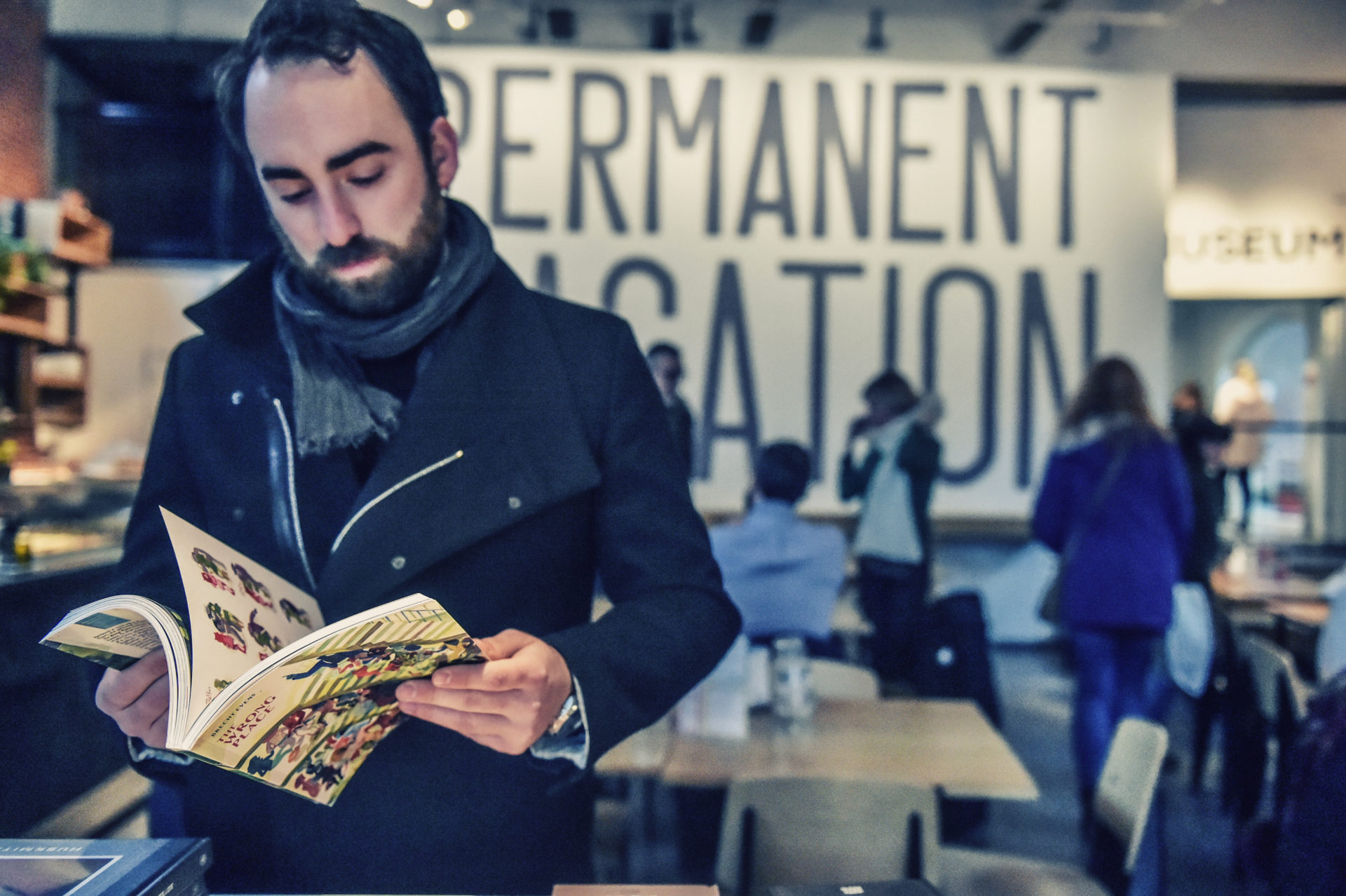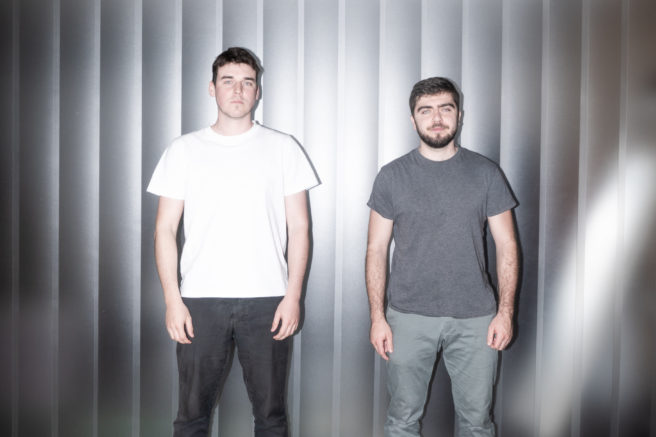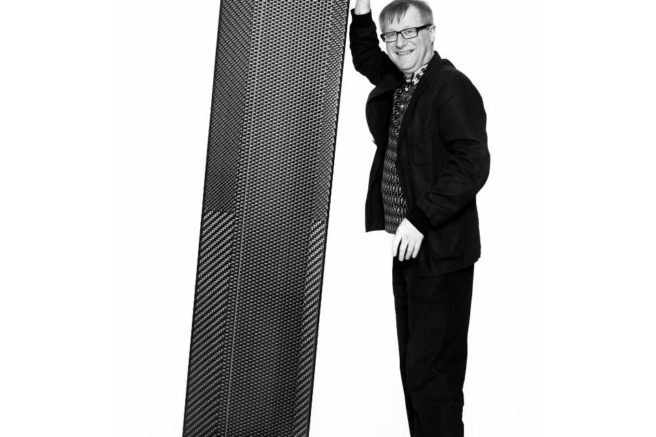Wanderful Loves
As creative director of Recor Group, Frederik streamlines the five Recor Home collections. A difficult featto pull off, because altogether it involved more than 60 new products, many of which were by his hand. As a designer, however,it was not his first time around.The designer, with roots in Alken (Limburg), divides his time between Recor and his design studio in Antwerp. A portrait of the Designer of the Year 2018.
The past years have been like series of rapids for Frederik Delbart. Labels such as ‘upcoming talent’, ‘great promise’ and ‘one to watch’ followed in their wake. Particularly after the launch of RectoVerso in Milan, a refined marble trestle table that he created for the label Van Den Weghe/Items, all eyes of the international media followed his every move. The table is in fact remarkable. Made entirely of marble and by no means unwieldy or ponderous. ‘It was the very first marble table with trestles in the world,” says Frederik Delbart, pointing out its news value. In an ingenious way he developed an aluminium honeycomb core for the table top, which was then covered in Indian and Italian marble.
A great introduction to the international design forum. In Belgium, he set his seal with The Siblingsin 2014, for which he took home several awards at trade fairs such as the Salone del Mobile and Design Miami. The Siblings represent a versatile lighting system in which an LED lamp is incorporated into laboratory glass as a diffuse light source. You might see it asa modern reinterpretation of the construction lamp. When the Belgian label Per/Use introducedit to the market, it immediately received a Henry Van de Velde label, a prestigious quality mark for good design. An important recognition, because it was a commercial translation of Frederik’s graduation work at La Cambre in Brussels.
“I knew from an early age that I wanted to become a designer,” says Delbart. “I felt attracted to designing things through the intrinsic beauty of objects when they make actually a difference in form and function. Then my father mentioned La Cambre, a school founded by architect Henry Van de Velde in the spirit of the illustrious Bauhaus. And Bauhaus, that was something I knew about.” He took his chances. “I did not have a plan B. It just had to be La Cambre.” The demanding and intensive creative training required a lotof perseverance and resilience. “I constantly had to push my limits to survive: first that en- trance exam, then the first year … In retrospect, I think that this open-mindedness might have strengthened me, because I want- ed to know absolutely everything about the world of design.” Dictating a survival strategy, he thoroughly brushed up his French, adopted Brussels flair, and made the mentality of the infamous school his own. “If you can explain at La Cambre why you are doing something, and it holds up, then you are on the right track. Your arguments must be as strong as reinforced concrete; if they are not, you can forget it.”
He took his first steps as an assis- tant to the top Limburg designer Bram Boo – hailed as Designer of the Year, that same year – and who was overwhelmed with inquiries and projects. A dream schooling for Delbart, who assisted Bram Boo like a Swiss army knife. He started immersing himself in new technologies and developments while he was still graduating, such as the (then still) brand-new LED technology. That led to his thesis project ‘The Siblings’, actually passing the prototype phase and going into production. His great interest in LEDs and lighting earned him a job at Philips’ professional lighting department, where he built up significant experience in project management. Simultaneously, since obtaining his diploma, Frederik has spent all his free time working on his own independent design studio. For example, Delbart entered into joint ventures with Quincalux, a West Flemish family company specialising in door fittings, and for the Brussels BISLighting, he brought the Aluci sub-label back to life. In 2016, he was the Belgian representative at the Design Biennale in London and in 2017 he was the guest of honour at BAD – Belgian Art & Design, a highly esteemed exhi- bition in which art and design coincide. “Due to the rapid devel- opments in technology, lighting remains an interesting domain, but these door handles are also quite interesting. I sketch ideas every day, as an exercise. A bit like a violinist does finger exercises. Seats, chairs, but equally, cars … I never set limits for myself. As a designer, you must be able to look at things with an open mind and be inspired by everything.”
This open-mindedness, in combination with guts and perseverance, is characteristic because it also came in handy for Recor. The fact that he, as a young art director – born in 1988, was given the responsibility for defining Recor Home’s market profile was not a matter of course. “My role as art director is not just focused on delivering product ideas,” he says. “There is more to it than the creation of the label and the various collections, since the strategy around the brand also has to be elaborated and followed up. Where is Recor Home headed, what goals do we set out to get there, and how will we use our expertise in product development and production to be successful? Recor is a family business that has built up so much know-how over the years that it is an honour to be allowed to work here as an art director.” In the meantime, he has gathered a whole team of experts around him to allow the label and the collections to continue to grow. His appointment has been one of the biggest in the Belgian furniture industry, offering a pretty good idea of what is yet to come.




